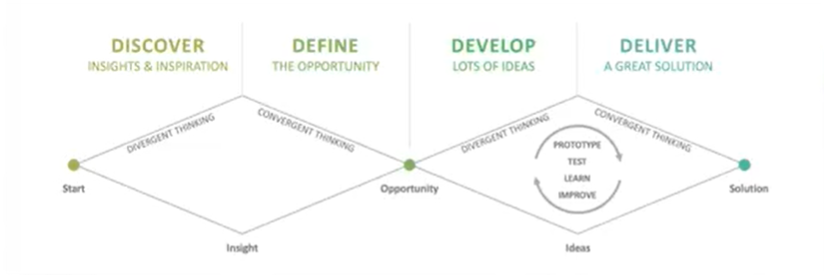Technology is important when innovating but it is important to consider what makes these ideas useful and desirable by people.
ATBN in collaboration with AfriconEU hosted a webinar titled “Collaborate to Innovate ”. The main speaker, Ben Griffin, is a Design Lead at Innovate UK, the UK Government’s innovation agency.
The webinar sought to provide digital innovation hubs (DIHs) across Africa and Europe with an expert and practical view of how to harness the power of people-centered design.
Three key takeaways from the webinar are outlined below.
Gathering user insights is key to creating an innovative product
People have different reasons for using a product or solution. The creator can innovate around their offering if they deeply understand the various reasons people have for using the product.
Ben cited an example comparing the traditional washroom hand dryer and the modern design of washroom hand dryer used widely in the UK. From personal experience, he realized this equipment is not only used for drying the hands but sometimes drying wet portions of the user’s clothes. The new design model does not meet this need. Should the designers have had this insight while developing the new model, the product would have been made to cater for this need as well. DIHs can gather insights about their products by engaging with users and talking with people to learn more about their needs and expectations.
Using a people-centered design approach yields better outcomes
Ben made reference to the double diamond approach which simplifies the people-centered design approach and was developed by the UK’s Design Council. He explained the “Discover” stage to be one that involves divergent thinking, thus the innovator must identify and engage the users to gather insights which motivate their behavior in order to understand how it influences the solution and how the designer can create a useful outcome for their users.
The “Define” stage which involves convergent thinking requires focusing on specific opportunities identified from the first stage which can add value to the problem and identify the attributes which can make the innovation useful and desirable to users.
The “Develop” stage involves generating lots of ideas, testing them to gain feedback, acting on the feedback to improve ideas and revisiting to make sure the design addresses what matters most to the community. It is an iterative process which greatly increases the potential for innovation teams to develop successful solutions.

Double Diamond Model. Source: Design Council, UK
Your community can play different roles in the design process
Lastly, the speaker elaborated on the role of collaboration in innovation by discussing the different roles communities can play in the design process. If the innovator designs for the community, it is people-centered design. With this, the designer takes feedback or finds the needs of the community and uses it to develop the idea. It becomes participatory design or co-design when the innovator designs with the community. In this case, the community is more involved in the process because the innovator acts as a facilitator to reproduce the ideas. At the end of the spectrum is radical participatory design, an emerging field where the community creates the design process and creates the solutions. In other words, members of the community themselves are the designers here.
In conclusion, it is worth noting that Innovation is not always about creating wholly new ideas from scratch. It is also about adding value to existing ideas having people or users in mind. People-centered design is used to innovate more effectively and collaboratively to create solutions with and for the community.
To see our upcoming events, please visit our events page.